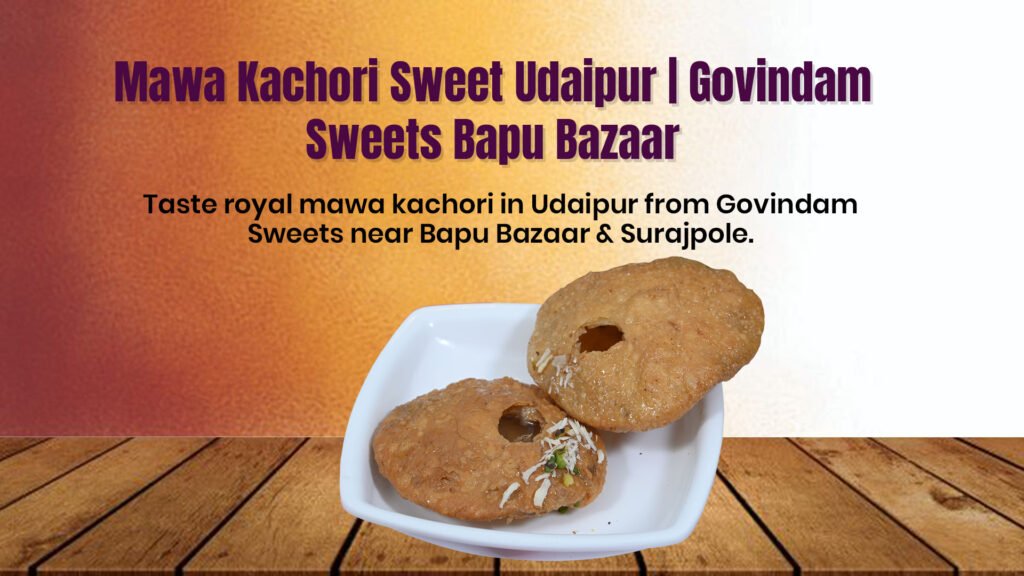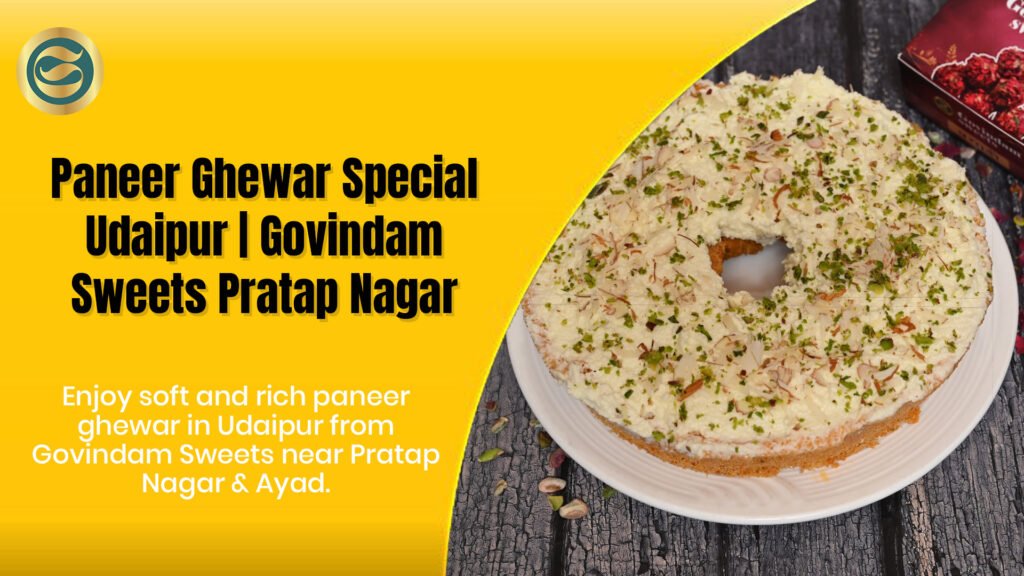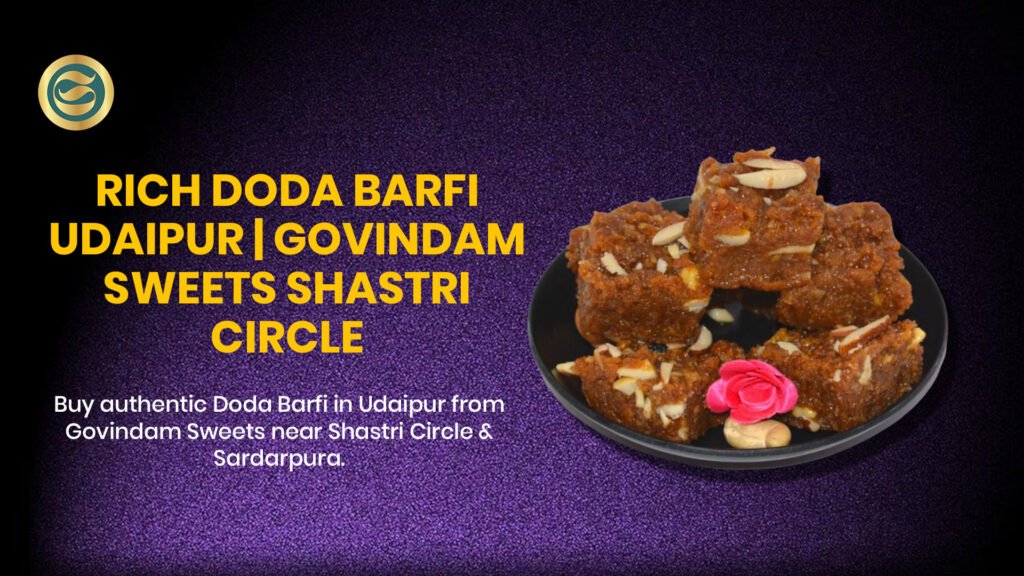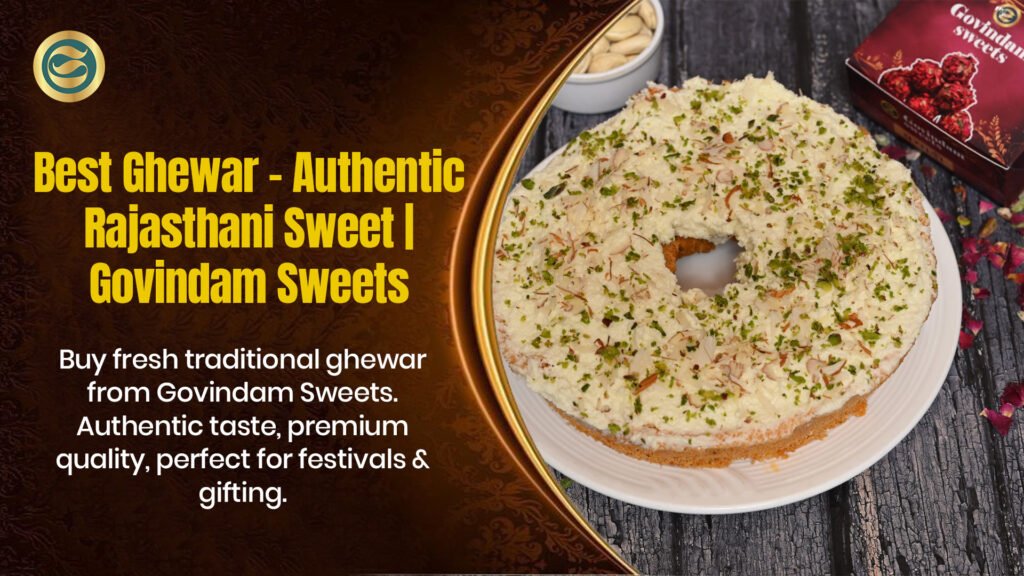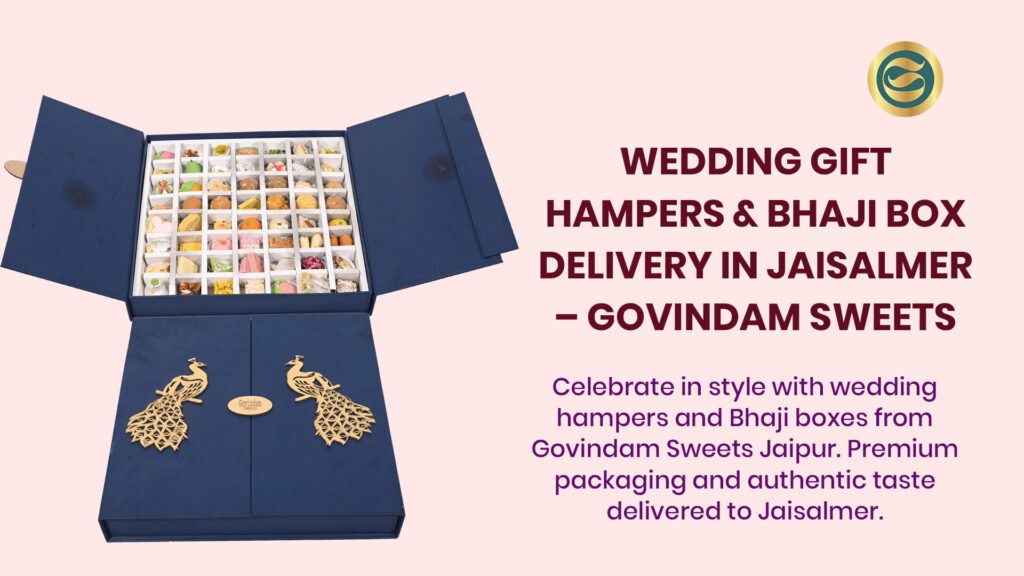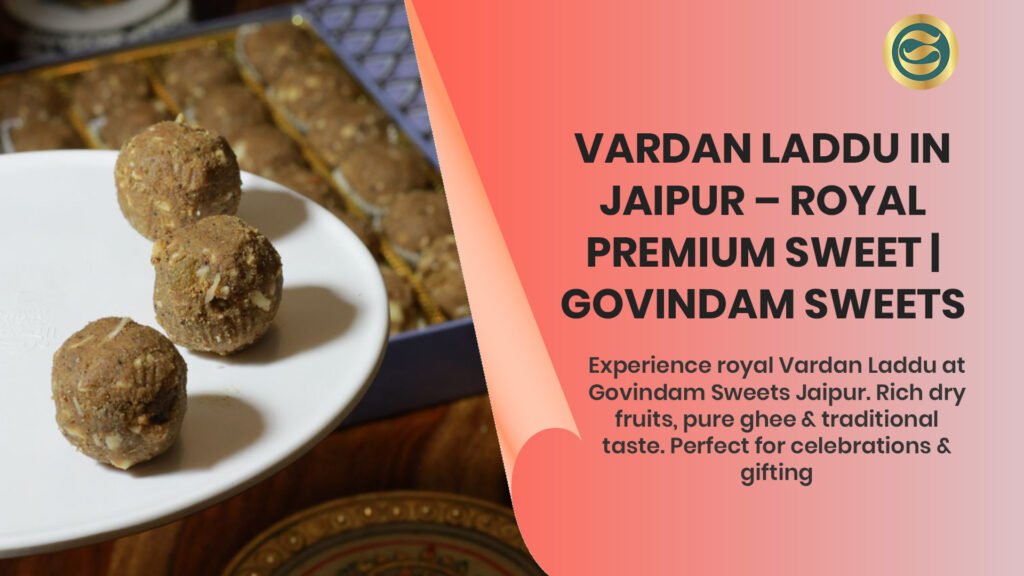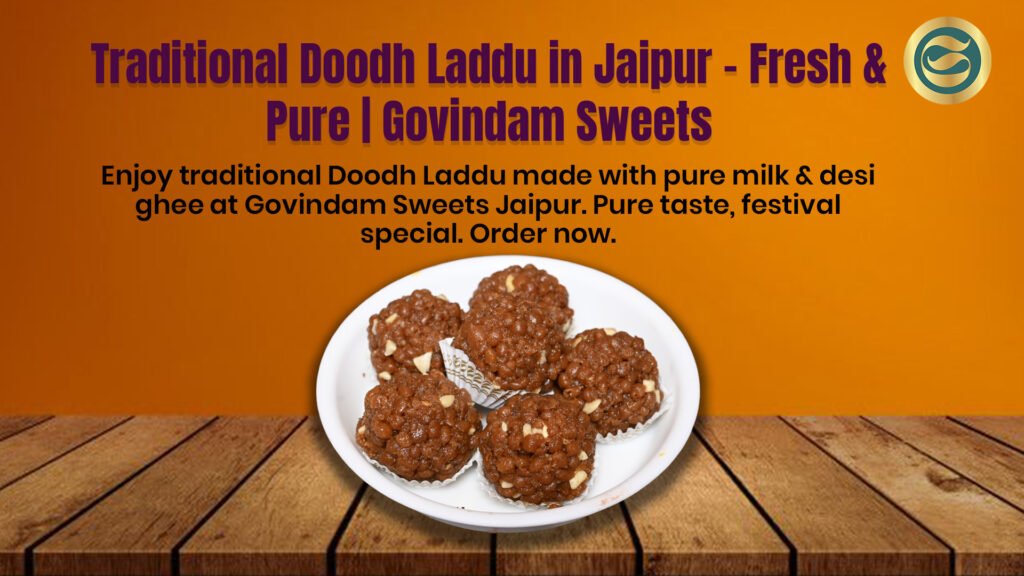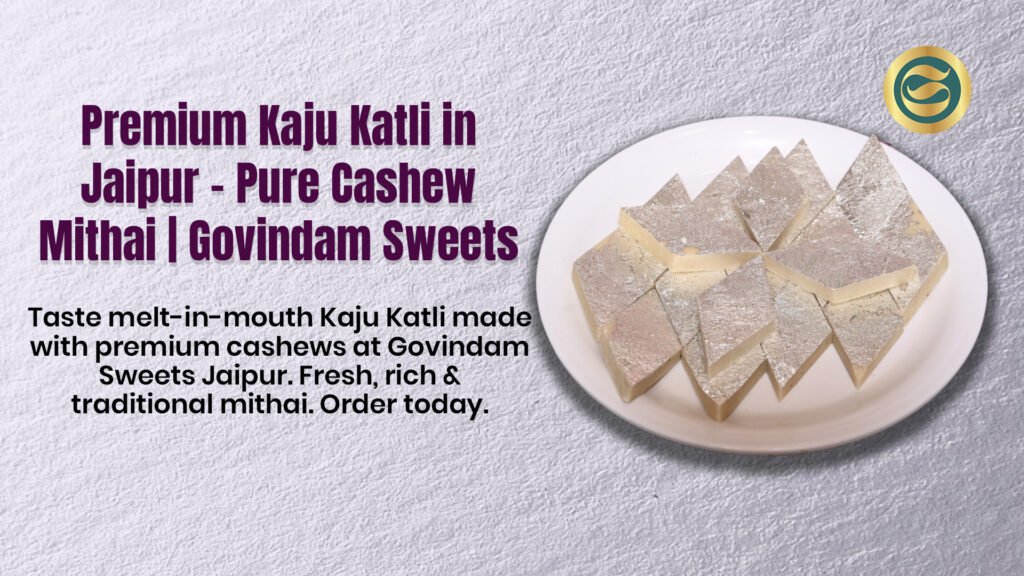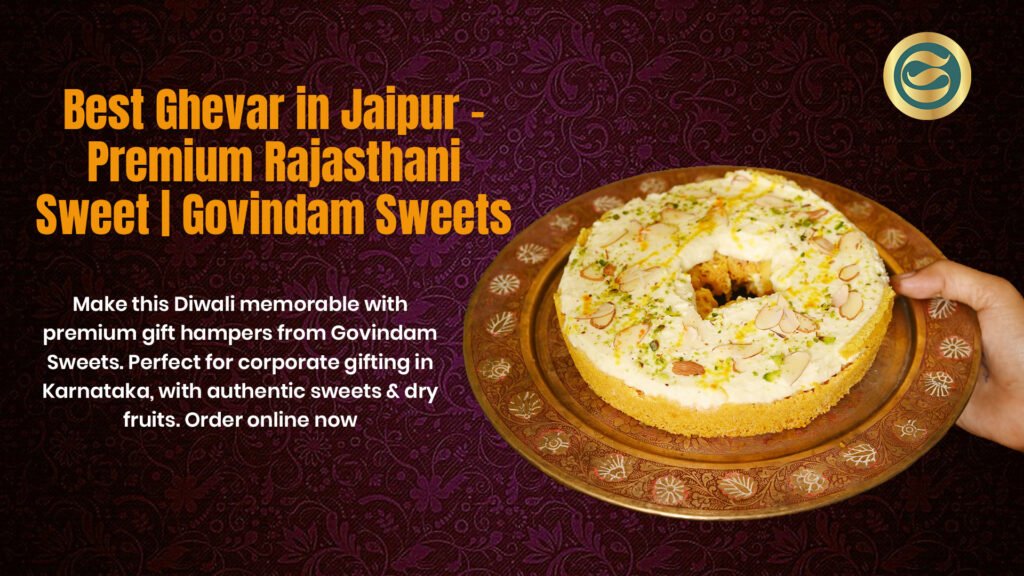
Posts
Discover Rich History and Origin of Rajasthani Sweets Heritage
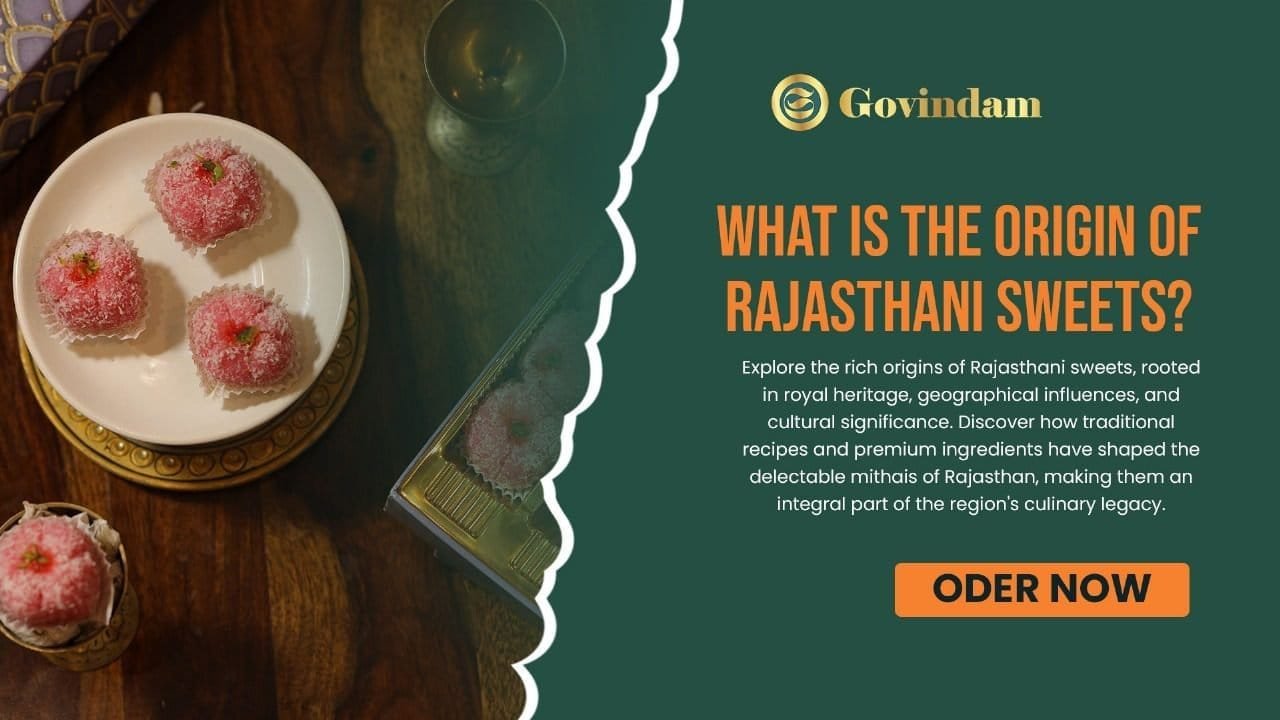
Discover the fascinating history and origins of Rajasthani sweets shaped by royal patronage, desert climate, trade routes, and warrior culture. Explore how geographical challenges, agricultural limitations, and cultural traditions created distinctive confections like Ghewar, Balwan Laddu, and Mawa Kachori representing centuries of culinary innovation and heritage.
Discover the Rich History and Origin of Rajasthani Sweets
Introduction: Unveiling the Sweet Legacy of the Desert Kingdom
The culinary heritage of Rajasthan encompasses a remarkable confectionery tradition that has evolved over centuries, shaped by royal patronage, desert geography, warrior culture, and trade route influences that converged creating distinctive preparations now celebrated throughout India and increasingly worldwide. The history and origins of these desert state confections reveal fascinating stories about how geographical challenges, agricultural limitations, cultural practices, and creative ingenuity combined producing sweet preparations that transcend their humble regional origins to become iconic representations of Indian confectionery excellence recognized far beyond Rajasthan’s boundaries.
Understanding the historical development of these traditional preparations requires examining multiple interconnected factors—the harsh desert climate that demanded preservation techniques and ingredient adaptations, the royal courts that elevated sweet-making from subsistence craft to refined art form, the warrior culture that valued portable high-energy foods, the trade routes that introduced new ingredients and techniques, and the religious and cultural practices that embedded sweets into social fabric through festival associations and celebration traditions. These complex historical forces created confectionery traditions that reflect not merely recipes but entire worldviews about hospitality, celebration, creativity within constraints, and cultural identity expression through food.
Govindam Sweets stands as custodian of this rich heritage, maintaining authentic preparation methods for traditional specialties including Ghewar, Balwan Laddu, and comprehensive range of Rajasthani preparations that honor centuries of culinary evolution while meeting contemporary quality standards. Our commitment to traditional excellence connects modern customers to historical confectionery heritage spanning generations of skilled artisans, royal patronage, and cultural continuity that makes these preparations more than mere sweets—they represent living links to remarkable desert kingdom’s enduring culinary legacy.
The Geographic and Environmental Foundations Rajasthani Sweets
Desert Climate’s Influence on Rajasthani Sweets Development
The harsh Rajasthani desert climate fundamentally shaped traditional sweet preparations through practical necessities that eventually became defining characteristics distinguishing regional confections from those developed in more temperate or humid areas. The extreme heat, minimal rainfall, scarce water resources, and dramatic temperature fluctuations between day and night all created challenges for food preservation and preparation that early inhabitants addressed through innovative techniques becoming embedded in culinary traditions.
Sweet preparations adapted to these conditions through minimal moisture content preventing spoilage in hot dry conditions, extensive use of sugar and jaggery providing natural preservation, preference for ghee-based rather than water-based preparations, and ingredients with inherently long shelf lives without refrigeration. These practical adaptations, while originally born from necessity, created distinctive textures, flavors, and keeping qualities that now define authentic preparations even when modern refrigeration makes some historical constraints obsolete.
The desert environment also influenced ingredient availability and agricultural patterns. Limited water availability restricted certain crop cultivation while favoring drought-resistant plants. Milk products from desert-adapted livestock became important confectionery bases. Locally available ingredients including gram flour, sesame seeds, and various nuts featured prominently in traditional preparations developed within agricultural constraints that creative cooks transformed into culinary opportunities rather than merely accepting as limitations.
Agricultural Constraints and Creative Solutions
Rajasthan’s challenging agricultural conditions—limited arable land, water scarcity, extreme temperatures—restricted ingredient diversity compared to more fertile regions, requiring creative approaches maximizing available resources and developing preparations showcasing limited palettes through technical excellence rather than ingredient variety. The emphasis on gram flour, sesame, jaggery, and milk products reflects agricultural realities that skilled confectioners transformed into distinctive regional character rather than inferior substitutes for unavailable ingredients.
This creativity within constraints demonstrates how limitations can drive innovation, with Rajasthani confectioners developing elaborate preparations from restricted ingredient bases that rivals created using diverse ingredients from abundant agricultural systems. The technical sophistication in preparations like Ghewar—creating intricate honeycomb structures from simple batter through specialized technique—exemplifies how skill and ingenuity compensate for ingredient limitations, creating confections that command respect not despite but partially because of the challenges overcome in their creation.
The Role of Livestock and Dairy Products
Desert-adapted livestock including goats, sheep, and distinctive cattle breeds capable of surviving harsh conditions provided dairy products forming foundations for numerous traditional preparations. Fresh milk, ghee (clarified butter), khoya (reduced milk solids), and mawa (milk-based ingredient) all feature prominently in sweet preparations, with dairy processing techniques adapted to desert conditions ensuring products remained usable despite heat and water scarcity affecting preservation and cooling capabilities.
The importance of dairy in traditional confectionery reflects both availability from desert-adapted livestock and nutritional value crucial for populations in harsh environments requiring concentrated nutrition. The generous use of ghee in preparations provided essential fats and calories supporting physical demands of desert life, while milk-based sweets contributed protein and calcium to diets potentially deficient in these nutrients depending on agricultural production variations and economic circumstances affecting food access.
Royal Patronage and Aristocratic Refinement
Maharajas as Confectionery Patrons
The transformation of basic sustenance sweets into elaborate confections worthy of international recognition owes considerable debt to Rajput maharajas who maintained lavish courts where culinary excellence served as markers of power, sophistication, and cultural refinement. Royal patronage provided resources for experimentation, attracted skilled artisans from across India and beyond, and created demand for increasingly elaborate preparations that pushed creative boundaries far beyond what subsistence requirements or commercial markets alone would have sustained.
Royal kitchens employed specialized halwais (confectioners) whose sole responsibility involved creating impressive sweets for court celebrations, diplomatic receptions, religious observances, and daily consumption by royal families and their extensive retinues. These positions provided economic security enabling practitioners dedicating careers to sweet-making mastery, developing techniques and refinements that filtered down through society as recipes and methods gradually spread beyond palace walls into commercial establishments serving broader populations.
The competitive dynamics between different royal courts—each seeking to demonstrate superiority through various markers including culinary excellence—drove continuous innovation and quality improvements. Maharajas commissioned special preparations for important occasions, rewarded exceptional creations with recognition and resources, and collected renowned confectioners the way they collected artisans in other crafts. This royal support system created environment where sweet-making evolved from craft into art form worthy of serious cultural attention and preservation efforts.
Signature Royal Preparations and Their Stories
Many traditional preparations trace origins directly to specific royal courts or were refined under particular maharajas’ patronage into forms now recognized as classic versions. Balwan Laddu, for example, reportedly developed in royal kitchens as strengthening food for warriors, with “balwan” literally meaning “strong” or “powerful”—reflecting the preparation’s original purpose providing concentrated nutrition for physical exertion rather than merely serving as indulgent treat.
Ghewar’s association with festivals and celebrations likely strengthened through royal observances where elaborate versions became centerpieces of celebration feasts, with size and decoration reflecting occasion importance and royal magnificence. The intricate preparation technique requiring specialized equipment and considerable skill suggests development in resource-rich royal environments where investment in tools and training proved economically viable despite complexity that might deter more modest operations prioritizing efficiency over elaborate results.
These royal associations continue influencing contemporary perceptions and marketing, with many establishments emphasizing historical connections to royal courts as authenticity markers and quality signals. The “royal heritage” narrative, while sometimes overstated for commercial purposes, genuinely reflects historical realities where royal patronage significantly elevated sweet-making standards and preserved techniques that might otherwise have disappeared without institutional support transcending individual artisan lifespans and economic fluctuations affecting commercial viability.
The Spread from Palaces to Public
The gradual democratization of royal sweet traditions occurred through multiple pathways. Court confectioners sometimes left royal service establishing commercial operations bringing palace techniques to paying customers. Royal gifts and celebration distributions exposed broader populations to elaborate preparations previously confined to aristocratic circles. Independence and princely state integration ending royal privileges eventually dispersed palace staff and knowledge into commercial sectors. These processes transformed exclusive royal luxuries into regional heritage accessible to all economic strata, though quality variations naturally emerged as commercial pressures and ingredient costs influenced preparations in ways royal kitchens insulated from profit concerns never faced.
The democratization preserved techniques and recipes while adapting them to different economic realities and consumption contexts. Commercial establishments simplified some labor-intensive aspects, adjusted ingredient ratios balancing quality with cost considerations, and scaled production methods to volumes impossible in royal kitchens preparing limited batches for restricted populations. These adaptations ensured tradition survival in changing economic and social circumstances, even if purists sometimes lament compromises compared to idealized royal standards potentially more mythologized than accurately remembered.
The Influence of Trade Routes and Cultural Exchange
Caravan Routes and Ingredient Introductions
Rajasthan’s historical position controlling important trade routes connecting northern India to Gujarat ports, Delhi to western regions, and various internal trade corridors meant regular exposure to ingredients, techniques, and culinary influences from diverse origins. Spices from Kerala, dry fruits from Afghanistan and Central Asia, sugar processing techniques from various regions, and cooking methods from different cultural traditions all potentially influenced sweet development through merchant interactions, migrant artisan settlements, and general cultural exchange characteristic of trade route societies.
While documenting specific historical influences proves challenging given limited written records about culinary history, the geographical reality of Rajasthan’s trade importance makes cultural exchange inevitable. Some ingredients now considered quintessentially Rajasthani—like certain spices or preparation techniques—may actually represent historical imports that became so thoroughly integrated into regional cuisine that origins faded from collective memory. This cultural fluidity characterizes all culinary traditions despite contemporary desires for “pure” authentic forms untainted by external influences that historical realities inevitably included.
Military Campaigns and Culinary Diffusion
The martial traditions of Rajput warriors involved extensive military campaigns sometimes extending far from Rajasthan’s borders, creating opportunities for culinary exchange as armies required portable, nutritious foods that could withstand travel without spoiling. The foods developed for military purposes—dense, sweet, energy-rich preparations with extended shelf lives—influenced both Rajasthani sweet traditions and potentially other regions where Rajput military presence introduced these preparations to new populations who adapted and integrated them into local food cultures.
The reverse influence also occurred, with returning warriors and camp followers bringing back culinary knowledge from regions where campaigns occurred. These exchanges, while undocumented in most cases, certainly happened given historical realities of military mobility and the human tendency to adopt useful innovations encountered through travel and cultural contact. The resulting confectionery traditions reflect this complex history of exchange, adaptation, and creative synthesis rather than isolated development in cultural vacuum—reality that enriches rather than diminishes traditions by demonstrating human capacity for learning, adaptation, and creative cultural fusion.
The Evolution of Iconic Preparations
Ghewar: From Festival Specialty to Year-Round Icon
The evolution of Ghewar—now perhaps Rajasthan’s most recognizable confection—illustrates how traditional preparations develop over time through technique refinement, cultural associations, and market dynamics. The distinctive honeycomb structure requires specialized equipment (cylindrical molds) and precise technique (batter consistency, oil temperature, pouring method) suggesting gradual development through experimentation rather than sudden invention. Early versions might have been simpler, with sophistication increasing as techniques refined and specialized tools developed specifically for this preparation rather than improvised from general kitchen implements.
The strong association with Teej festival and monsoon season likely reflects both ingredient availability patterns (fresh flour from wheat harvests) and cultural practices linking specific foods to particular celebrations through religious significance, seasonal appropriateness, or historical precedent now obscured by time. The festival association helped preserve Ghewar preparation knowledge by ensuring annual demand supporting artisan specialists whose skills might otherwise atrophy without regular practice opportunities commercial market alone might not sustain.
Modern Ghewar evolution continues with variations including mawa (milk solids) and paneer (cottage cheese) versions expanding beyond traditional plain style, size diversification accommodating different uses and budgets, and year-round availability as commercial establishments recognize demand beyond seasonal festival concentrations. These contemporary developments demonstrate living tradition adapting to changed circumstances while maintaining technical core that defines authentic preparation regardless of secondary variations or market extensions beyond traditional seasonal patterns.
Balwan Laddu: Warrior Food to Celebration Sweet
Balwan Laddu’s transition from functional warrior sustenance to celebration confection exemplifies how foods evolve beyond original purposes as contexts change. The original development as strengthening food for physical exertion—providing concentrated nutrition, easy portability, and long shelf life for military campaigns or physical labor—created preparation valued for practical utility rather than merely indulgent pleasure. The nutritional density and energizing properties that made it valuable for warriors translated easily to general population contexts where these same qualities proved attractive even absent original military applications.
The evolution into celebration food reflects multiple factors: the association with warrior culture creating prestige connections that elevated social meanings beyond mere nutrition, the sweet taste making it inherently appealing for celebration contexts where pleasure rather than utility drives consumption, and the keeping qualities that made it practical for festival preparations and gift distributions requiring products maintaining quality through storage and transport typical of social exchanges during celebrations when sweets circulate extensively through community networks.
Modern Balwan Laddu maintains connections to heritage while adapting to contemporary contexts. The name still references “strength” even as most consumers relate to it primarily as delicious traditional sweet rather than functional energy food. The preparation techniques honor traditional recipes while accommodating modern hygiene standards and commercial production requirements. The result preserves cultural continuity linking present consumers to historical origins while remaining relevant to contemporary consumption patterns and quality expectations that necessarily differ from those prevailing in earlier eras when these traditions developed.
Regional Variations and Local Innovations
The diversity within traditional categories demonstrates how different cities and regions developed distinctive styles despite common foundations. Bikaner’s bhujia represents the city’s particular confectionery genius adapted to savory rather than sweet domain but demonstrating same technical sophistication and ingredient innovation characterizing sweet preparations. Jaipur’s variations on common preparations reflect Pink City’s specific culinary evolution influenced by royal Jaipur court preferences and commercial market dynamics in major urban center. Jodhpur, Udaipur, Ajmer, and other cities each contributed variations and innovations that enriched overall regional tradition while maintaining recognizable common characteristics that unite diverse preparations under Rajasthani identity.
These regional variations demonstrate living traditions continuously evolving through local innovation and creative adaptation rather than static forms perfectly preserved unchanged across centuries—romantic notion that historical reality never supports. The variations also create pilgrimage opportunities for food enthusiasts seeking authentic local versions in origin cities, supporting artisan preservation through tourism and cultural interest complementing commercial demand from regular customer bases who might otherwise prove insufficient maintaining traditional operations amid economic pressures favoring mass production and standardization over artisanal diversity and local distinctiveness.
Cultural and Religious Significance
Festival Associations and Ritual Meanings
The deep integration of sweets into Rajasthani festival observances and religious practices gave confections meanings transcending mere culinary enjoyment to encompass ritual significance, symbolic communication, and spiritual dimensions. Specific sweets became associated with particular festivals through theological significance, seasonal appropriateness, or historical precedent—associations that ensured continued preparation and consumption as ritual observance even when practical rationales (seasonal ingredient availability, nutritional requirements) potentially became less relevant under changed circumstances.
Makarsankranti’s emphasis on sesame and jaggery preparations reflects harvest timing, nutritional properties considered appropriate for winter season, and religious symbolism associating these ingredients with ritual purification and auspicious beginnings. Teej’s Ghewar connection links to monsoon celebration, goddess worship, and marital themes that festival honors. Diwali’s comprehensive sweet focus reflects prosperity themes, goddess Lakshmi worship, and general celebration atmosphere that festival creates. These associations embedded sweets into religious and cultural fabric ensuring tradition transmission across generations through ritual participation that teaches food preparation and consumption patterns as integral components of cultural identity formation.
The religious and festival associations also provided quality pressure maintaining preparation standards. Foods intended for deity offerings or ritual distributions required purity and quality befitting sacred contexts, creating expectations that influenced general commercial standards even for secular consumption. The ritual contexts prevented complete commercialization that might have degraded quality through cost-cutting pressures, as religious significance created quality floors below which preparations risked cultural inappropriateness regardless of economic advantages that compromises might have offered.
Hospitality Traditions and Social Bonds
Rajasthani hospitality traditions place sweets at the center of guest reception, celebration hosting, and relationship maintenance through food exchanges that communicate respect, affection, and social connections. The famous “Padharo Mhare Des” (Welcome to My Land) hospitality ethic finds expression partly through generous sweet offerings demonstrating hosts’ desire to provide best possible reception regardless of personal economic circumstances that might make such generosity financially challenging.
These hospitality traditions created market demand supporting confectionery artisans beyond what pure indulgent consumption alone might sustain. Social obligations to offer sweets when receiving guests, celebrating occasions, or maintaining relationships through periodic gifts all generated demand relatively insensitive to economic fluctuations as cultural expectations trumped purely discretionary spending considerations. This demand stability helped traditional establishments surviving economic challenges that might have eliminated operations dependent solely on luxury consumption vulnerable to economic downturns reducing discretionary spending.
The social bonding functions of sweet exchanges—expressing gratitude, celebrating relationships, marking life transitions, resolving conflicts through symbolic offerings—embedded confections into social fabric as communication tools conveying meanings beyond verbal expression. These symbolic functions ensured continued relevance even as changing lifestyles and dietary consciousness affected pure consumption patterns, as social and symbolic dimensions maintained importance even for consumers moderating overall sweet consumption for health reasons.
Technical Innovations and Preparation Mastery
Specialized Equipment and Tools Development
The development of specialized equipment for particular preparations—Ghewar molds, specific shaping tools, particular vessel types for different cooking stages—demonstrates how technical sophistication evolved through incremental innovations improving results, efficiency, or consistency. These equipment developments required investment and expertise, suggesting emergence of specialized confectioner class for whom such investments proved economically rational given career focus on sweet-making rather than occasional preparation as household task among many competing demands.
The specialized equipment also created barriers to entry helping preserve artisan specialists against pure market competition that might have commoditized preparations if anyone could easily replicate results without significant skill or equipment investment. The technical sophistication embedded in tools and techniques became forms of intellectual property protecting traditional knowledge from complete appropriation while allowing sufficient diffusion maintaining tradition vitality through broader practitioner communities than pure secrecy or restriction would have sustained.
Modern equipment adaptations continue this evolution, with traditional techniques sometimes adapted to contemporary tools improving hygiene, consistency, or efficiency while maintaining essential preparation characteristics defining authentic results. The balance between preserving traditional methods and accepting practical improvements represents ongoing negotiation in all living traditions, with different practitioners finding various balance points between absolute tradition conservation and pragmatic adaptation to contemporary contexts.
Technique Refinement Through Generational Knowledge
The transmission of preparation techniques through apprenticeship and family knowledge transfer created refinement opportunities as each generation potentially improved upon inherited methods through practice, experimentation, and accumulated experience. The tacit knowledge embedded in skilled practice—judgment calls about temperatures, timing, textures, and countless subtle factors that written recipes cannot fully capture—accumulated over generations of dedicated practitioners whose livelihoods depended on consistent excellence motivating continuous skill development and technique refinement.
This generational knowledge accumulation created distinctive local and family styles distinguishing different establishments despite apparently similar preparations. The subtle differences in technique, timing, or ingredient selection that make one establishment’s version distinctive from others’ represents generations of particular lineage’s accumulated wisdom and preference development—cultural capital that cannot be easily copied despite recipe availability, as tacit dimensions require extensive practice under experienced guidance rather than merely following written instructions.
The challenge of technique preservation amid changing economic conditions, declining apprenticeship systems, and generational succession difficulties represents ongoing concern for traditional sweet-making. Documentation efforts, culinary education programs, and heritage preservation initiatives all attempt addressing these challenges, though the embodied knowledge and skill dimension makes preservation through any method other than active practice within master-apprentice relationships inherently limited regardless of good intentions and resource investments in archival and educational programs.
Modern Preservation and Evolution
Balancing Tradition and Contemporary Standards
Contemporary establishments like Govindam Sweets navigate complex balance between preserving traditional preparation methods while meeting modern expectations regarding hygiene, packaging, consistent quality, and service standards that historical operations never addressed. FSSAI certification requirements, packaging regulations, labor laws, and various contemporary standards all create constraints that traditional operations historically avoided but modern businesses must satisfy regardless of tradition considerations.
This balance requires thoughtful negotiation between honoring heritage and accepting necessary adaptations. Core preparation techniques and ingredient quality standards receive preservation priority as essential tradition elements, while peripheral aspects like packaging, facilities, or business practices accept modernization as practical necessities that don’t compromise fundamental confectionery character. The result maintains authentic preparations through contemporary commercial structures that historical artisans never navigated but that provide only viable path for tradition survival in present economic and regulatory environments.
Tourism and Cultural Representation
Growing culinary tourism focused on authentic regional cuisines creates both opportunities and risks for traditional sweet preservation. Tourism generates economic incentives supporting traditional operations through visitor traffic and cultural interest complementing local customer bases. However, tourism pressure sometimes encourages commercialization or authenticity compromises creating tourist-oriented versions diverging from genuine local traditions while claiming traditional status for marketing purposes.
Quality establishments resist these pressures maintaining authentic preparations regardless of customer composition, serving tourists identically to local residents rather than creating separate tourist-focused offerings that might be more immediately accessible or photographable but less culturally authentic. This integrity preserves tradition while sharing it with broader audiences, creating positive tourism outcomes supporting preservation rather than corrupting traditions through excessive commercial adaptation or creating artificial “traditional” experiences that bear little resemblance to living cultural practices.
Heritage Documentation and Knowledge Preservation
Systematic documentation efforts by cultural organizations, academic researchers, and heritage preservation initiatives create records of traditional preparations, techniques, and cultural contexts that might otherwise disappear as oral traditions and embodied practices face succession challenges and economic pressures. These documentation projects serve archival functions preserving knowledge even if active practice declines, while also providing educational resources supporting revival efforts or informing contemporary practitioners interested in historical practices and cultural contexts beyond their direct experience or community knowledge.
The documentation efforts face inherent limitations given the tacit, embodied, and experiential dimensions of traditional practices that resist complete capture through any recording medium. Nevertheless, the partial knowledge preservation proves valuable compared to complete loss that might occur without documentation attempts, even if recorded information cannot fully replace living traditions transmitted through active practice and direct mentorship relationships that characterized historical knowledge transfer patterns.
Frequently Asked Questions About Historical Traditions
Q: How old are traditional Rajasthani sweet preparations? A: Precise dating proves difficult given limited historical records, though many preparations likely evolved over centuries with continuous refinement. Some may trace origins to medieval periods or earlier, while current forms result from historical evolution rather than sudden invention.
Q: Did royal courts really influence common sweet traditions? A: Yes, royal patronage significantly elevated preparation standards, supported specialist artisans, and drove innovation that gradually spread beyond palace walls into commercial establishments and eventually broader population consumption patterns.
Q: How did desert conditions specifically shape sweet preparation? A: Desert climate demanded minimal moisture content for preservation, favored ghee-based preparations, required extended shelf life without refrigeration, and limited ingredient diversity forcing creative optimization of available resources into distinctive preparations.
Q: Are preparation methods still the same as historical traditions? A: Core techniques often remain similar, though modern adaptations address contemporary hygiene standards, equipment availability, and production scales. The balance varies across establishments, with some maintaining stricter traditional adherence than others accepting greater modernization.
Q: What role did trade routes play in development? A: Trade routes exposed Rajasthan to external ingredients, techniques, and culinary influences while also spreading Rajasthani preparations to other regions. This exchange enriched traditions while maintaining distinctive regional character despite cultural contact and ingredient introductions.
Q: How were recipes preserved across generations? A: Primarily through apprenticeship and family transmission involving hands-on practice under experienced guidance rather than written recipes. This oral/practical transmission created both preservation challenges and opportunities for continuous refinement through generational knowledge accumulation.
Q: Did religious factors influence sweet development? A: Significantly. Festival associations, ritual requirements, and religious symbolism embedded sweets into cultural practices ensuring continued preparation while creating quality expectations from sacred contexts that influenced general standards beyond purely religious consumption.
Q: How have modern changes affected traditional preparations? A: Contemporary adaptations address hygiene standards, regulations, production scales, and market demands while attempting to preserve core preparation techniques and ingredient quality. The balance between tradition and modernization varies across different establishments and preparations.
Q: Why are certain sweets associated with specific festivals? A: Associations reflect seasonal ingredient availability, nutritional appropriateness, religious symbolism, and historical precedent. These connections embedded particular preparations into festival observances through cultural practices transmitted across generations.
Q: What threatens traditional sweet-making preservation? A: Succession challenges as younger generations pursue other careers, economic pressures favoring mass production, changing dietary preferences, skill transmission difficulties, and competition from industrial alternatives all present preservation challenges requiring active cultural support and market demand for authentic preparations.
Conclusion: Honoring Living Heritage
The rich history and fascinating origins of traditional confections from Rajasthan reveal how geographical challenges, royal patronage, cultural practices, and creative ingenuity converged creating distinctive sweet traditions that transcend their desert origins to become celebrated Indian culinary heritage. Understanding these historical foundations deepens appreciation for contemporary preparations that represent not merely recipes but living connections to centuries of cultural evolution, artisanal dedication, and community identity expression through distinctive confectionery traditions.
The journey from royal palace delicacies to democratic heritage accessible nationwide demonstrates how traditions evolve while maintaining cultural continuity connecting present enjoyment to historical origins. Modern establishments like Govindam Sweets serve as custodians of this remarkable heritage, preserving authentic preparation methods while adapting to contemporary contexts through thoughtful balance between tradition conservation and practical modernization necessary for commercial viability and regulatory compliance in current environments.
Experience this living heritage through authentic preparations at Govindam Sweets, where traditional specialties including Ghewar, Balwan Laddu, and comprehensive Rajasthani offerings honor centuries of confectionery evolution. Our online platform brings this heritage to customers nationwide, while franchise opportunities enable passionate entrepreneurs participating in tradition preservation and sharing through new market development.
Every traditional sweet carries stories of desert adaptation, royal refinement, cultural significance, and artisan mastery spanning generations of dedicated practitioners. By choosing authentic preparations from heritage-committed establishments, you participate in living tradition preservation ensuring these remarkable confections continue delighting future generations while honoring the rich history that makes them more than mere sweets—they represent edible cultural heritage connecting us to Rajasthan’s fascinating past while remaining vibrantly relevant in contemporary contexts where tradition and modernity coexist through thoughtful preservation and respectful evolution.

